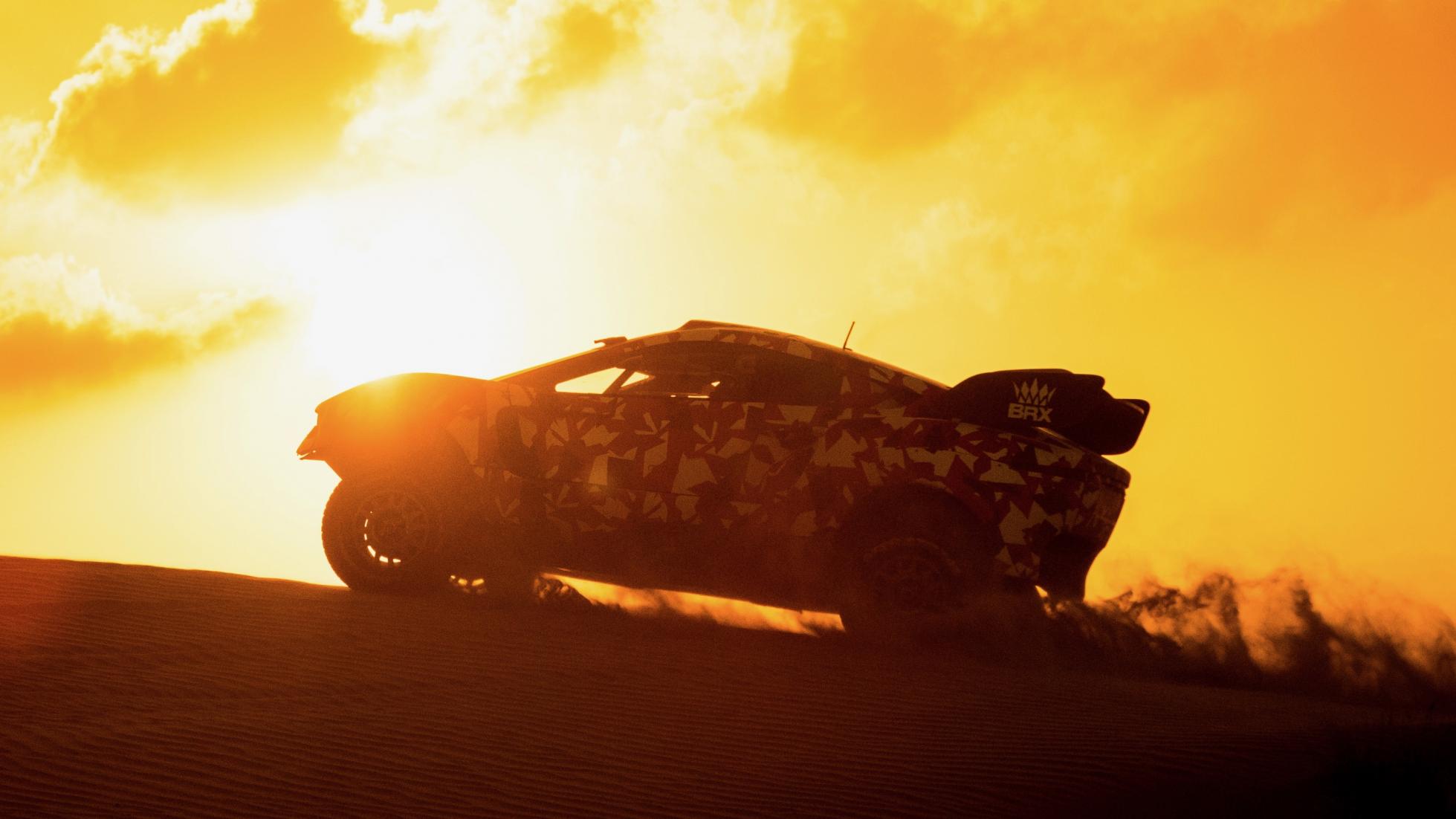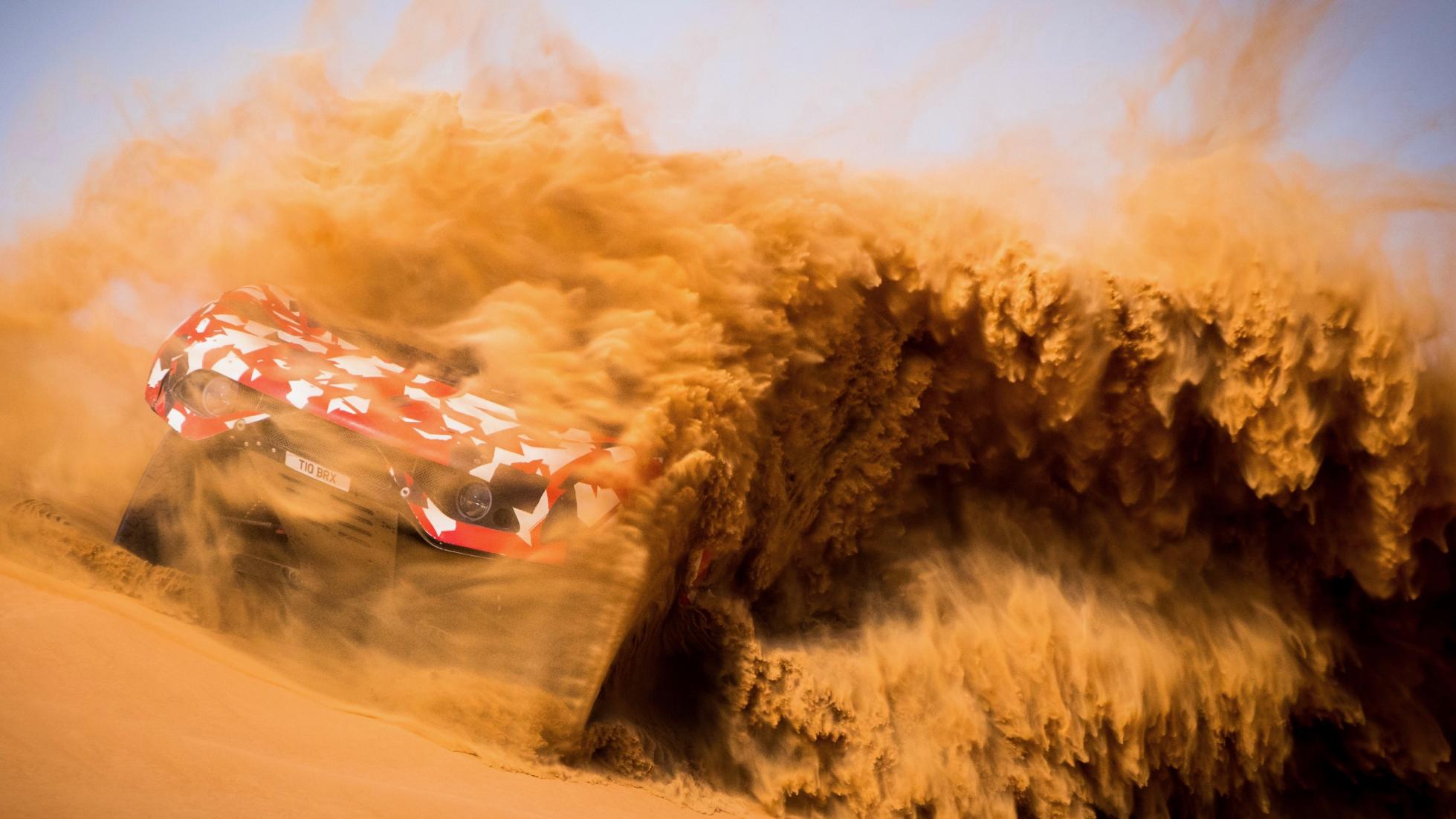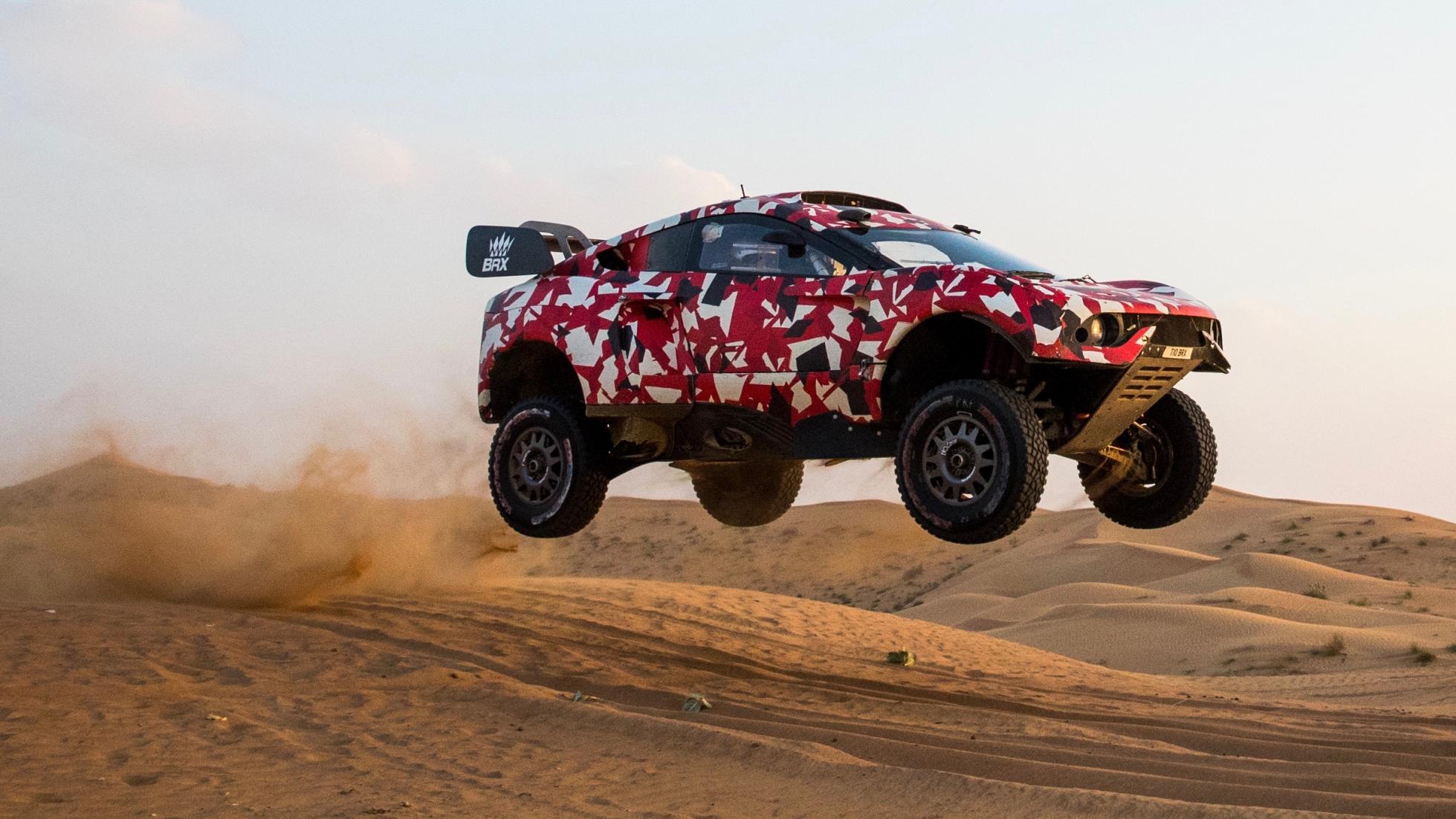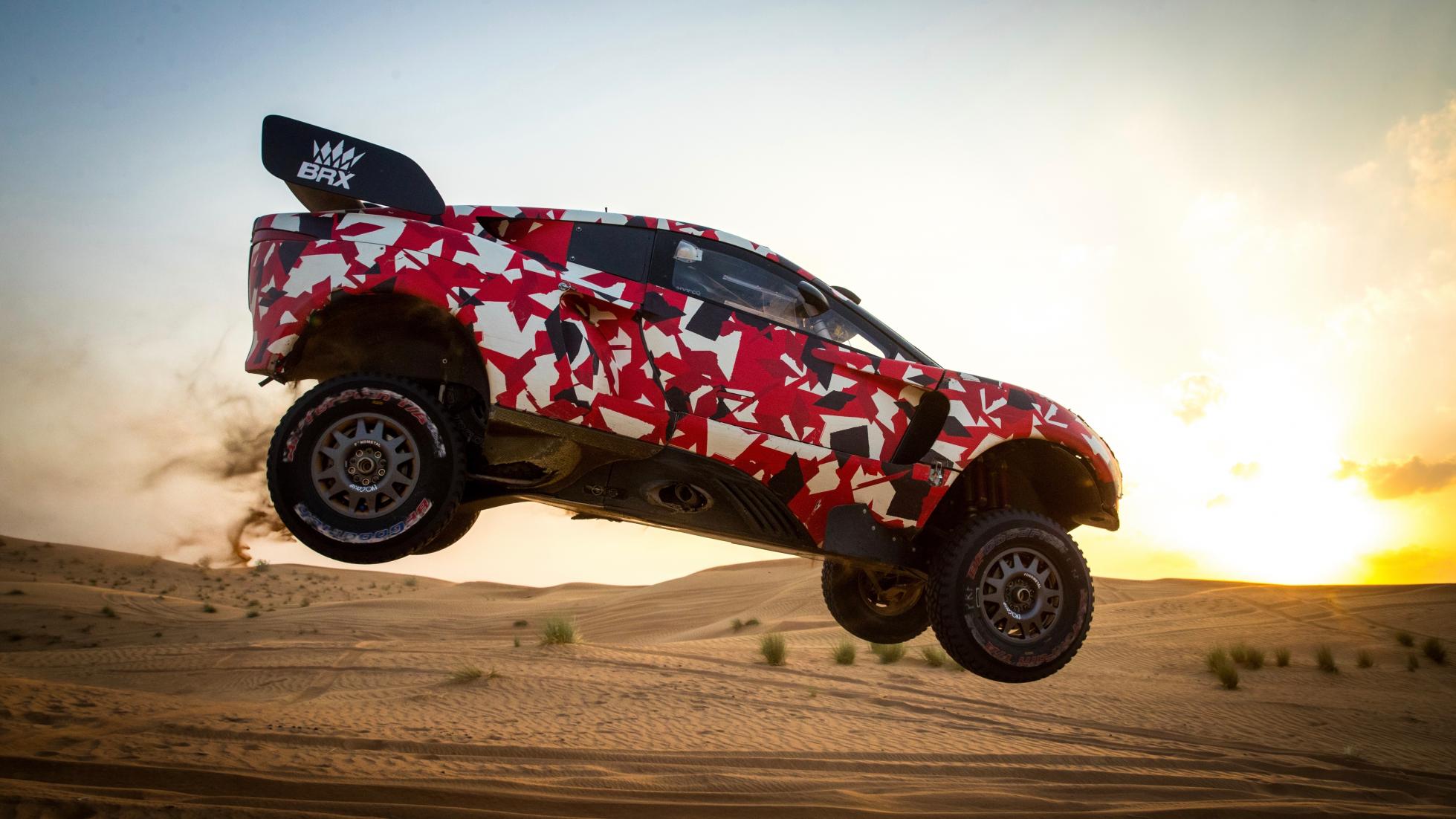The wild new BRX Hunter is a 400bhp cross-country racer
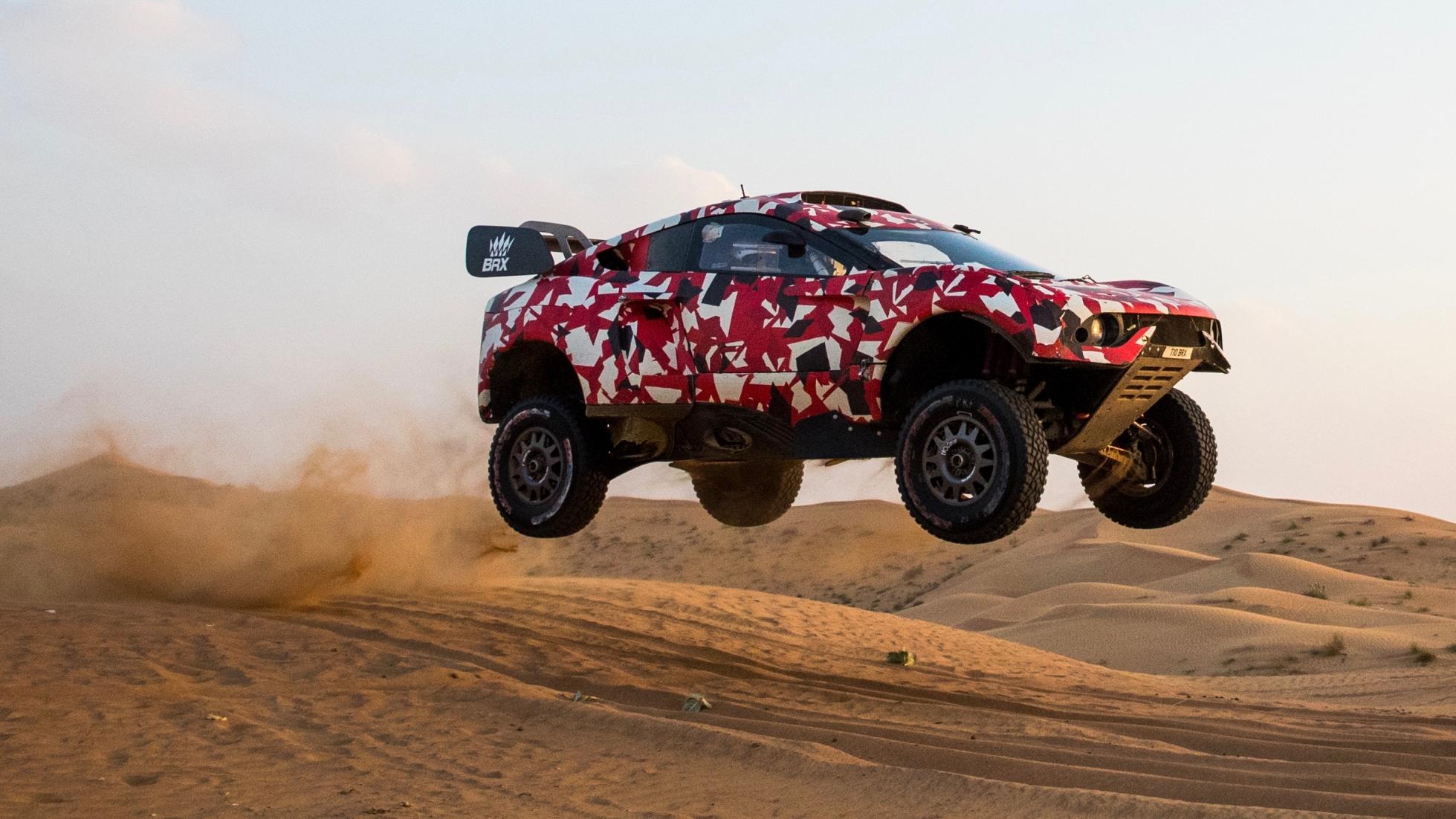
It’s called the BRX Hunter, and it aims to be the fastest way to get across rough terrain ever devised. It’s been built to take on the Dakar rally, that three week-long 10,000km romp across deserts, dunes, mountains and rocks that is the toughest motorsport event on the planet.
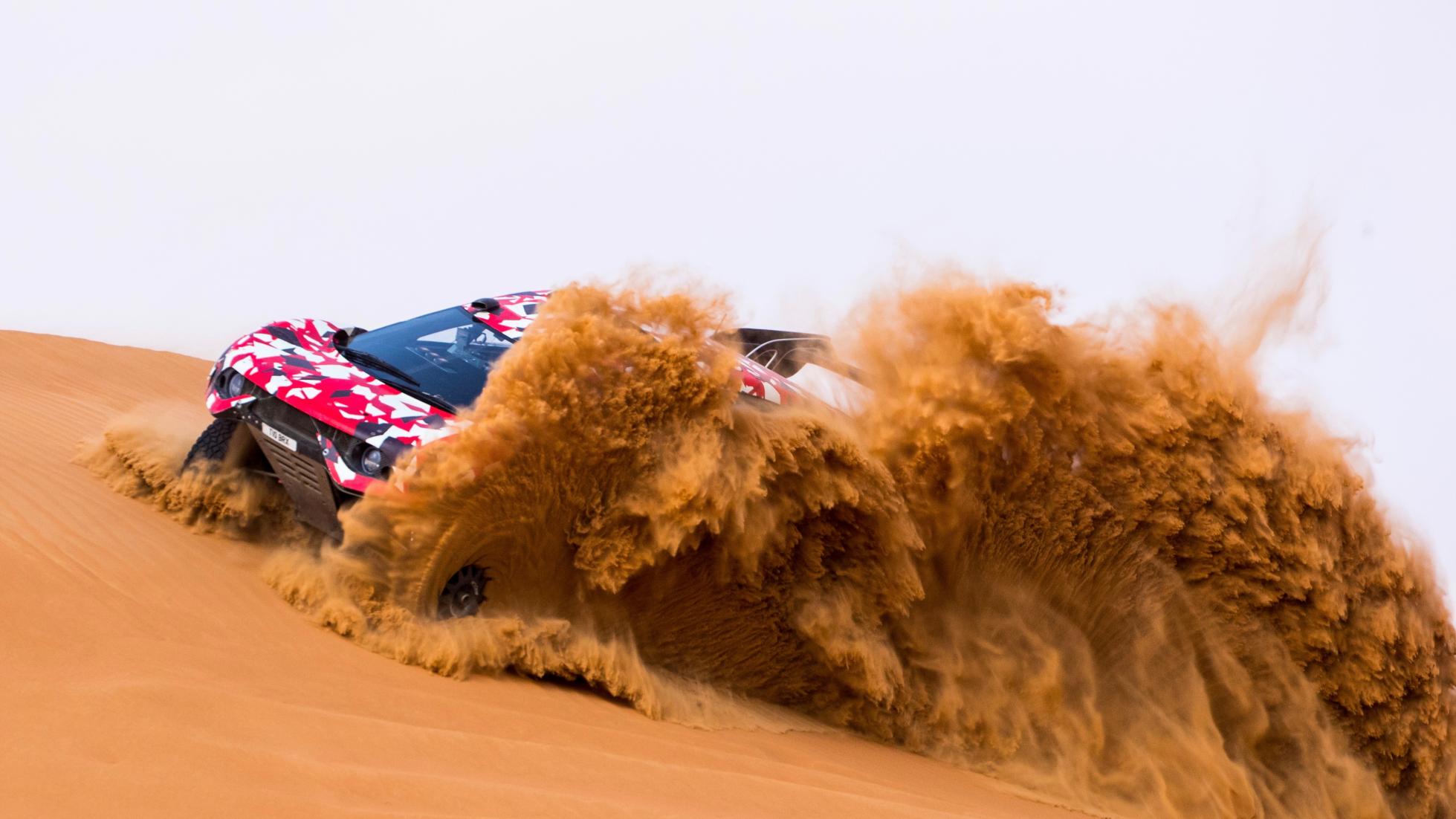
And created by no less a firm than three-time WRC champions Prodrive, who have competition experience covering everything from rallycross to Le Mans and Formula One. But never anything like this. It’s been built from the ground up around the FIA’s cross country regulations – a slender 16 page document that provides real scope for creativity.
It’s 4WD and powered by a familiar engine – Ford’s 3.5-litre twin turbo V6 Ecoboost engine that’s seen in everything from the F-150 pick-up to the GT supercar. In the Hunter it develops around 400bhp and 678Nm.
More interesting than what it is, is where it is. Because it’s not in the back, but almost entirely under the windscreen. What look like intakes on the flanks? That’s where the spare wheels are stored. There’s room for a third under the bodywork at the back.
Bodywork that has hints of a Jaguar F-Type to it. That’s because it’s the work of Jag’s ex-head of design Ian Callum. It’s there to give the car a sense of identity, because the long term aim is to turn BRX into a brand, expand its scope beyond competition into military applications and, ultimately, production road cars.
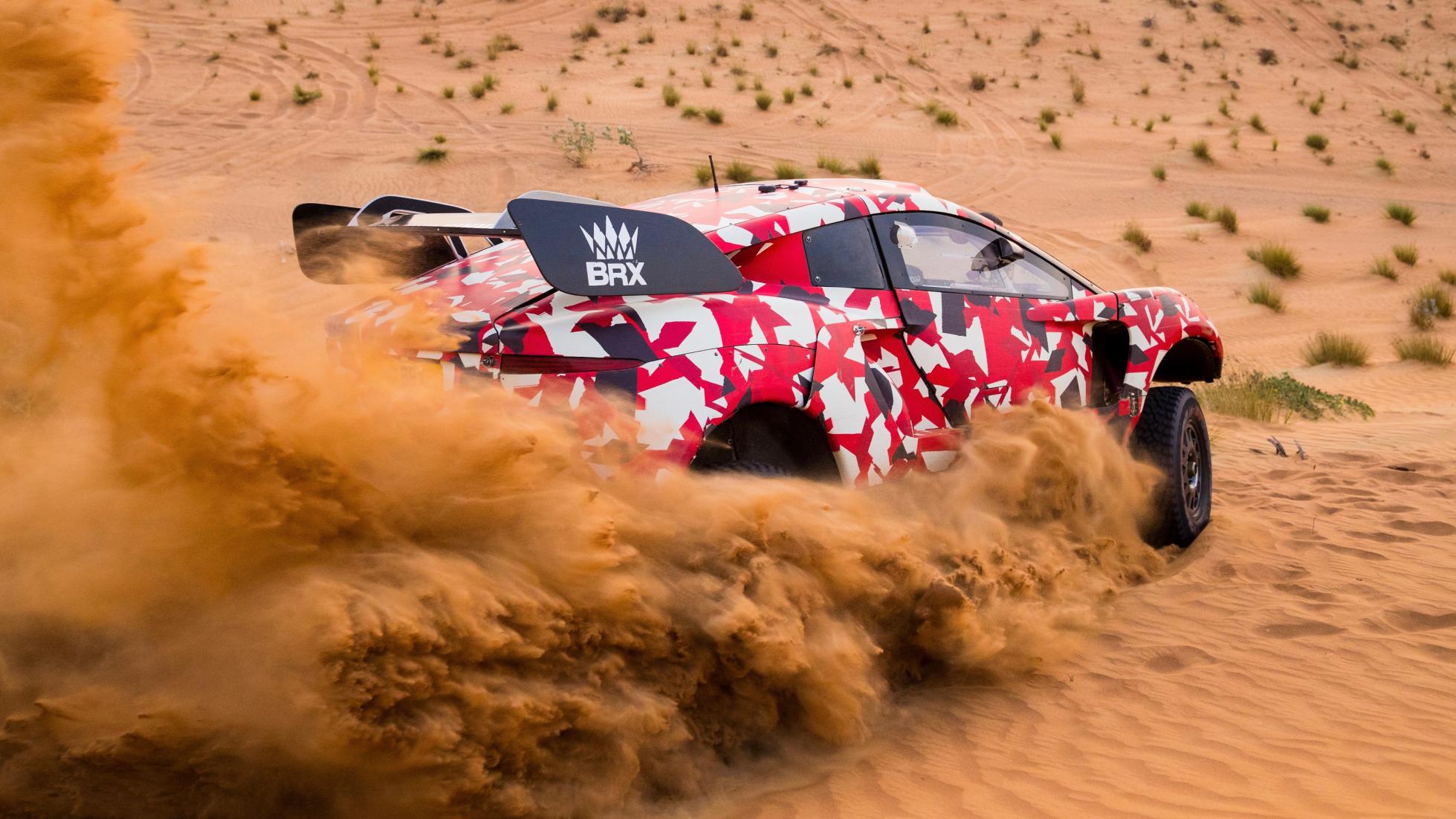
That huge wing? “It’s not about downforce,” says Prodrive’s chief engineer David Lapworth, “as we have a limited top speed of 180kmh [112mph]. But high speed stability is important and fitting the wing improves that and allows us to make the car sharper and pointier at lower speeds.” Characteristics one of its drivers, a certain Sebastian Loeb, is known to appreciate.
Wondering why the bonnet is as stubby as a Lamborghini’s and the windscreen comes so low? What’s important at Dakar is seeing where you’re going when you come up to dune crests or tilt over a mountain – or, as Lapworth puts it, “like a plane, it needs good visibility while it’s in the air”. You regularly see these things several metres in the air, but unlike the rear-drive Trophy Truck-inspired buggies that have dominated Dakar for much of the last decade, the 4WD machines are limited to just 28cm of wheel travel. A WRC rally car has more. As a result they need to be built tough, so the double wishbone suspension is supported by twin dampers at each corner, and the wheels and tyres are heavy duty, weighing about 40kg each.
All told, the steel spaceframe off-roader weighs about 1,910kg without driver and co-driver. It’s also relatively simple. No adaptive dampers or electronically controlled torque vectoring diffs are permitted. The only hydraulics are the built-in jacks and you’re not even allowed a paddleshift transmission. In fact this is the first year you’ve been able to have a turbocharged petrol engine – up until now it’s been turbo diesel or nat-asp petrol. There is GPS, but it’s only really there for the race organisers to check you’re not breaking the speed limit or to find you when you’re upside down in the middle of nowhere. That means no sat nav. The challenge of Dakar – besides just surviving it – is navigation, which is still done using maps and road books.
Prodrive claim not to have made any major breakthroughs, but to have found what they call a few ‘secondary gains’ – a slightly lower centre of gravity, a bit less unsprung mass – and when pushed, do say they’re quite happy with the packaging.
The 2021 race starts in Saudi Arabia on the 3 January. We’re hoping for great things.
